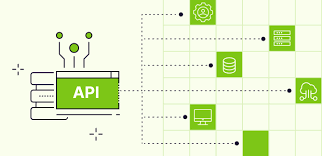Application Programming Interfaces (APIs) play a crucial role in data extraction by providing a structured and programmatic way to access and retrieve data from various sources. APIs allow different software systems to communicate and exchange information. Here’s an overview of APIs and their role in data extraction:
- What is an API?
An API is a set of rules and protocols that specifies how different software components should interact with each other. It defines the methods, data formats, authentication mechanisms, and endpoints through which applications can request and access certain functionalities or data from a remote server or service. APIs can be designed to retrieve data, perform actions, or provide other services. - Role of APIs in Data Extraction:
APIs are widely used for data extraction because they provide structured access to data in a machine-readable format. Here are some key aspects of APIs in data extraction:- Structured Data: APIs often return data in structured formats such as JSON (JavaScript Object Notation) or XML (eXtensible Markup Language). This makes it easier for developers and scraping tools to parse and extract the desired information.
- Standardized Interfaces: APIs offer standardized interfaces with well-defined endpoints and parameters. This simplifies the process of requesting and retrieving data, as developers can interact with APIs using standard HTTP methods like GET, POST, PUT, or DELETE.
- Data Consistency: APIs provide consistent data formats and structures, ensuring that the extracted data remains consistent and reliable over time. This is particularly beneficial when scraping data from sources that frequently update or change their content.
- Authentication and Authorization: APIs often require authentication and authorization to access protected or sensitive data. This ensures that only authorized users or applications can retrieve the data, adding an extra layer of security to the extraction process.
- Rate Limiting and Quotas: APIs may impose rate limits or quotas on data retrieval to prevent abuse or excessive requests. These limits help ensure fair usage and maintain the stability and performance of the API server.
- Versioning and Documentation: APIs often provide versioning support, allowing developers to access specific versions of the API and ensure compatibility. Additionally, well-documented APIs provide detailed information about the available endpoints, parameters, data formats, and usage guidelines, making it easier to integrate and extract data from them.
- Accessing APIs for Data Extraction:
To extract data from APIs, you typically need to make HTTP requests to the API endpoints using appropriate HTTP methods (e.g., GET, POST) and include any required parameters, headers, or authentication tokens. You can use programming languages like Python, along with libraries likerequests, to interact with APIs programmatically and retrieve the desired data. APIs may also provide client libraries or SDKs (Software Development Kits) in specific programming languages, simplifying the integration process.
It’s important to review the documentation provided by the API provider to understand the available endpoints, request/response formats, authentication requirements, rate limits, and any other guidelines for accessing and extracting data from the API.
Overall, APIs offer a structured and efficient approach to data extraction, allowing developers to access and retrieve data in a standardized and automated manner. By leveraging APIs, you can access a wide range of data sources and integrate them seamlessly into your scraping workflows.
